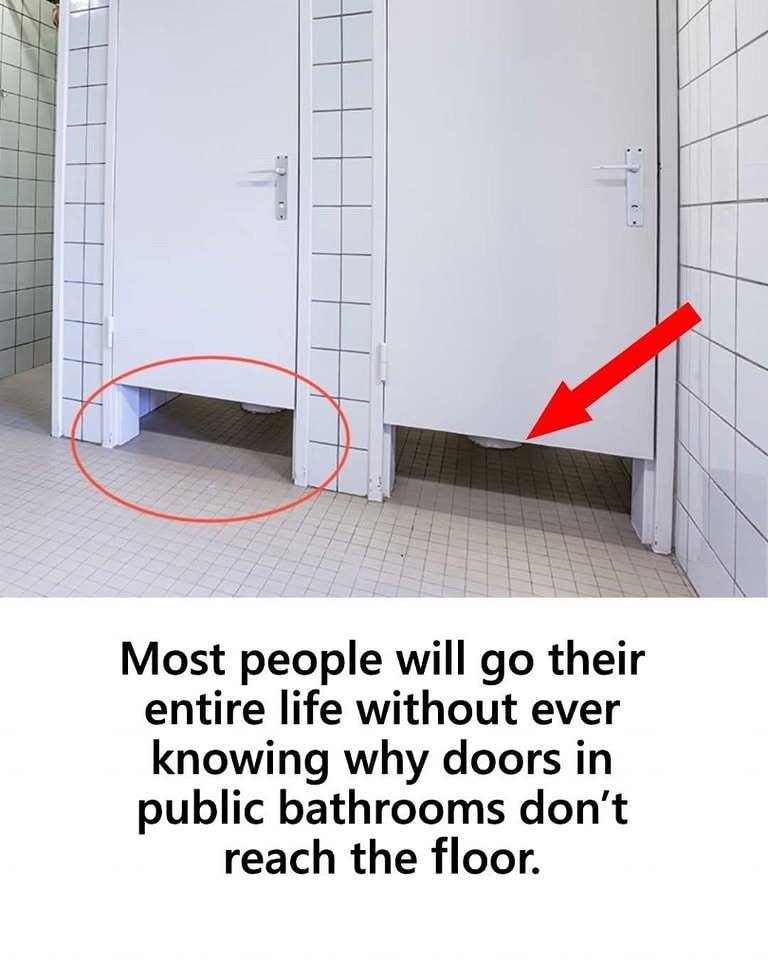Why Doors in Public Bathrooms Don’t Reach the Floor: 7 Surprisingly Practical Reasons
If you’ve ever used a public restroom, you’ve probably noticed one strange and almost universal design feature: the stall doors don’t go all the way to the floor. For first-timers, it can feel awkward, even invasive. Why wouldn’t you want full privacy in a bathroom?
But this isn’t a design flaw—it’s intentional. In fact, there are practical, safety, and even hygienic reasons behind those gap-to-floor bathroom doors.
Here’s a look at why public restroom stall doors are designed with space underneath, and how it actually benefits both users and facilities.
🚪 1. Emergency Situations Are Easier to Handle
If someone passes out or experiences a medical emergency inside a locked stall, having space beneath the door allows others to see and respond quickly. In a full-floor door setup, help could be delayed or require breaking the door down.
With a gap:
Emergency responders can check for signs of consciousness.
Stall doors can be unlocked or crawled under if needed.
🔐 2. Discourages Misuse and Vandalism
Unfortunately, public restrooms are often targets for loitering, illicit activity, or vandalism. The visibility created by a floor gap deters inappropriate behavior because others can easily notice what’s going on.
Think of it as passive supervision—without needing cameras or personnel.
🧼 3. Improves Airflow and Odor Control
Full enclosures can trap unpleasant odors and make restrooms feel stuffy. Leaving a gap below the door:
Improves ventilation
Allows air to circulate freely
Helps reduce lingering smells
It’s a small detail that makes a big difference in user comfort.
🚿 4. Easier and Faster Cleaning
From a maintenance perspective, floor gaps are a major win. Janitorial staff can:
Mop or hose the floors without opening every stall
Spot messes quickly
Keep things clean with less effort and time
It’s all about efficiency—especially in high-traffic locations like malls, airports, and stadiums.
🏗️ 5. Lower Cost and Easier Installation
Designing stalls with shorter doors means:
Less material is needed
Standard sizes can be used across facilities
Faster installation and easier replacement when parts break
This helps reduce construction and maintenance costs, especially in buildings with dozens of stalls.
👥 6. Helps Prevent Long Occupancy
When stall doors go all the way to the floor, people may feel a little too comfortable and linger longer than necessary—especially in busy places. Partial doors encourage quicker turnover, which is crucial when there’s a line forming outside.
It’s subtle, but effective.
❗ 7. Clear Visibility for Stall Availability
In large restrooms, it can be hard to tell which stalls are in use. Floor-level visibility allows you to:
Spot occupied stalls without knocking or peeking
Avoid awkward encounters
